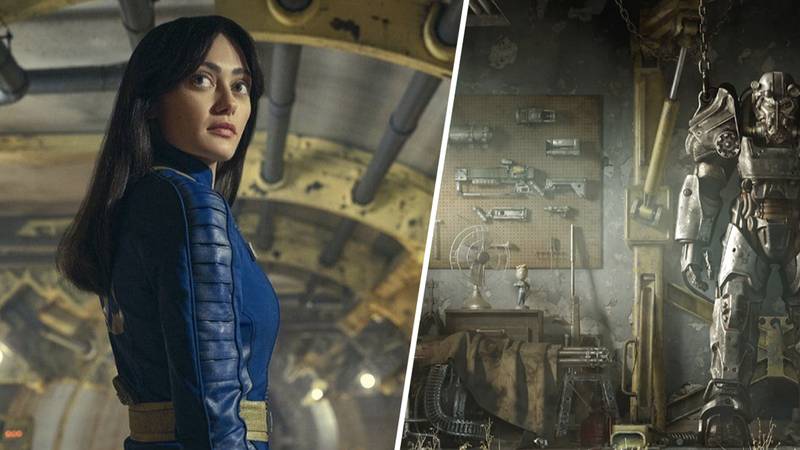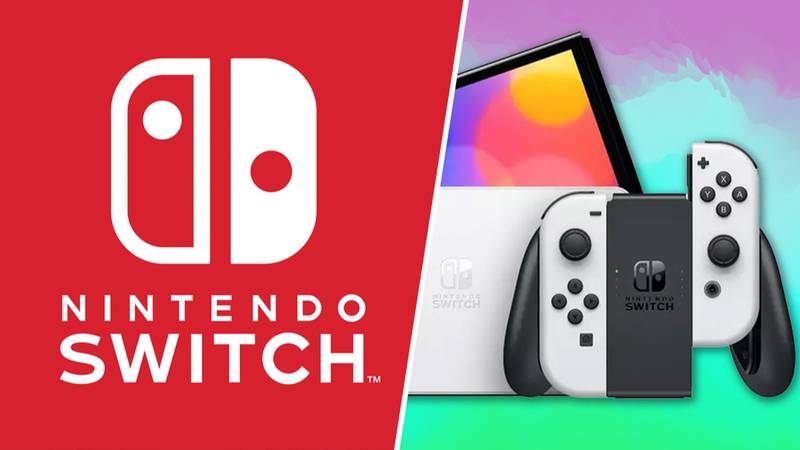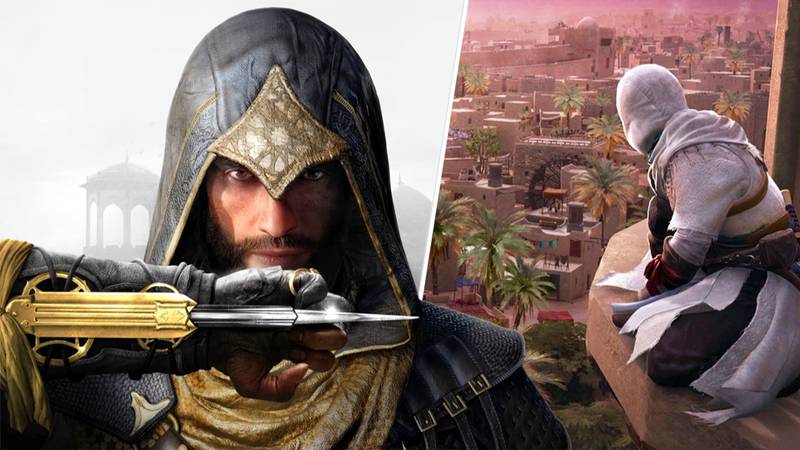‘Okami’, One Of The Most Beautiful Games Ever, Is 15 Today
Published
| Last updated

Featured Image Credit: Capcom
When I first saw Okami, it course-corrected my thinking on what a video game could look like, at the time. In the mid-00s, just as the Xbox 360 was coming through and the PlayStation 3 was imminent, games in my mind's eye had slipped into a muddy grey-brown mulch - high-definition, of course, but newfangled gritty realism was arriving at a cost to more fantastical imagination. Quake 4 and Call of Duty 2, Resident Evil 4 and Condemned: Criminal Origins - I'm not here to say these were bad games, at all, as they weren't; but it was as if all the colour had been drained from them, along with the blood.
Okay, you can argue that such games should have a certain bleakness about them, and yes there were plenty around with brighter palettes. But Okami was something else: a flood of the most vivid landscapes, seemingly painted into existence entirely by hand. To play Capcom's action-adventure role-player - released in Japan on April 20 2006, and in Europe almost a year later in February 2007 - was to be transported, completely, to another place. A world somewhat like our own, a Japan of the not-so-distant past; but a dream of it, formed of broad brushstrokes and refined pen and ink, and not needing newfangled HD consoles to shine as bright as a flaming beacon against a star-speckled night's sky.
Loading…
It wouldn't be until 2012 that Okami went HD, with a PS3 release quite brilliantly subtitled, in Japan, "Magnificent Version". A separate, 4K-supporting HD revision (check out its trailer, above) was released for Xbox One and PlayStation 4 in late 2017, and came to Switch the next summer. But arguably, Okami isn't a past-past-gen game that really needed the extra grunt of the PS4 and its peers to look as magnificent as its 2012 release claimed. Even on its debut platform of the PlayStation 2, and its subsequent port to the Nintendo Wii, this is a game that's so glorious in motion, so exquisite and singular in atmosphere, that it already stood out remarkably from everything else of its era.
Casting the player as the Sun goddess Amaterasu, a white wolf, Okami tells the tale of how she cleanses the land of a curse and defeats, against great odds, the king of all demons, Yami. Amaterasu is joined on her journey by Issun, an artistic Poncle (a sprite-like being) no bigger than a grasshopper, who has another agenda: he wishes to learn the 13 'celestial brush' techniques. And thankfully for all concerned, these aren't merely ways of painting ink onto paper in pleading shapes - the techniques can be used to summon abilities in combat, to solve environmental puzzles, and much more.
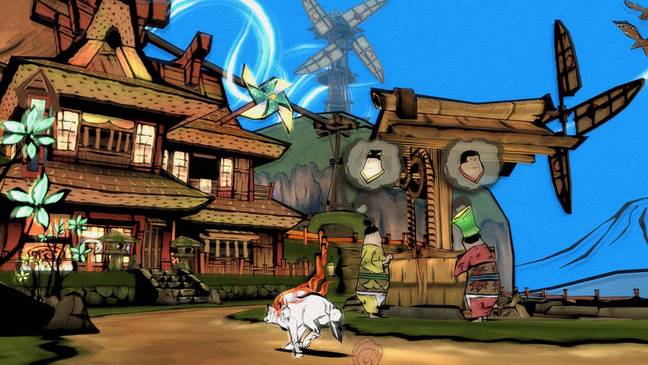
It's my intention to keep this piece brief, and really simply to encourage you to seek out Okami today, if you've not played it already. (It's regularly on sale, so keep your eye out for discounts.) But just to stick with the celestial brush gameplay for a second: it's this element of Okami which, aesthetics aside, has it feeling so different to something like Nintendo's Legend of Zelda series, which otherwise shares several similarities. (Indeed, Okami is quite deliberately modelled after said role-playing franchise.) The player's brushstrokes can slice enemies to destroy them, or reconnect broken crossings. It both gives and takes away, and effective use of the celestial brush - which uses ink, a finite resource - is essential to completing a game that can take 40 hours and more to see to the end.
The game's beautiful, utterly ageless look is based on the sumi-e style of ink painting, which developed out of 7th century China and became popular in Japan in the 15th century; and the Ukiyo-e style (or 'floating world' style) that spread throughout Japan from the late 1600s to the late 1800s. Okami's makers at Clover Studio - established by Capcom in 2004 to work on all-new IPs - leaned into this art style as a way of better managing the PlayStation 2's capabilities for 3D games, having originally wanted to make a more realistic-looking experience. Something more impressionistic was less demanding on humans and hardware alike - and frankly, thank goodness the team opted to go for colour and magic, rather than a lifelike wolf and world.

As if we'd had that, there's no doubt that so many of the small flourishes that make Okami what it is, would have never been realised. From the thick ink lines and drawn-in puffs of dust, to the undulating NPCs in conversation and mystical landscapes: it's hard to imagine this game without such deliberately different touches.
One of those marvelous little things, the way that flowers bloom in Amaterasu's wake as she runs, actually preceded the real substance of the game - its story, its combat, how it played beyond dashing from A to B. It dates back to a short, minute-long demo that Okami's director and writer Hideki Kamiya (probably best known then for directing the rather different original Resident Evil 2 and Devil May Cry) showed off to the rest of the Clover team - but what they saw then was enough to build from.
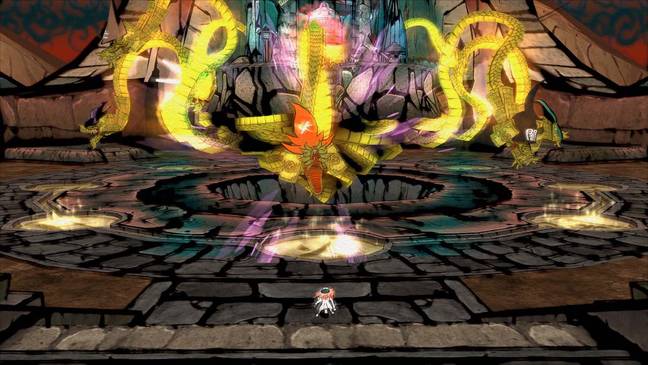
And what an exceptional end product Okami remains. Clover Studio's penultimate release (God Hand followed in late 2006, before key staffers at the Capcom subsidiary, including Kamiya, formed PlatinumGames), and one of the PS2's last major releases, it arrived at a transitional time for console gaming and was very nearly lost between generational cracks, with its sales disappointing. Reviews, however, were incredibly positive - the PlayStation 2 version of Okami earned several perfect scores, and the Ready At Dawn-developed Wii port, with added motion controls for the celestial brush (replacing analogue-stick control), wasn't too far behind in terms of accolades.
If you love Zelda but have never tried Okami, please, now's a perfect time. With the light but crisp touch of its remaster, just enough to make what was already there pop a little more, what you're playing on PS4, Xbox One and Switch is pretty close to the 2006 game - a game I still have on disc, ready for that one time in the far-off future where I test my creaking PS2, just because I've a free afternoon to do so. It's not the fastest of games, nor the most action-packed despite its frenetic boss battles, and there will be times where you're encouraged to just sit back and drink it in. Take a moment, be still, breathe. And you should. Because Okami is that incredibly rare video game that, somehow, in spite of being a work so tied to ever-evolving technology, only seems to improve with age.
Topics: Capcom, Retro Gaming






